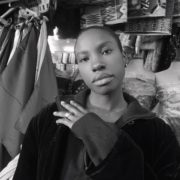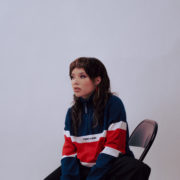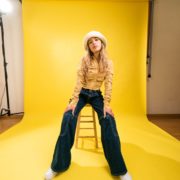The Rise of the Extra-Professional Creative

The term extra-professional creative refers to people who have stretched beyond the confines of a professional role into the realms of creativity.
Contribution by Emma Hanson.
I have coined the term extra-professional creative to refer here to people who have stretched beyond the confines of a professional role into the realms of creativity. They are the very people we have to thank for modern medicine, the Hangover, the Cuban revolution, The NATIVE magazine, and An Ordinary Wonder.
I recently spoke with and interviewed debut author Buki Papillon. Among other things, she and I agreed our degrees were essentially very expensive paths to becoming writers; hers is in law, and mine in medicine.
We spotted that we also had in common ethnic minority upbringings against the backdrop of a globalised Western society. To this point, Papillon added a phrase many people with similar backgrounds have heard at least once in their lives: “When you grow up in Nigeria, you don’t say you want to become a writer. You say you want to become a doctor, a lawyer, or an engineer.”

Thanks to meme culture, we are now starting to understand that the span of these pressures is far more wide-reaching than we can ever know or cover.
The Model Minority Myth
The model minority and monolithic minority myths were first brought to my attention by Nikesh Shukla’s The Good Immigrant. In addition to denying an individual’s complexity, they have been described as a “code for being on perpetual probation” (Sandeep Parmar on Wei Ming Kam’s essay), wielding their power by living rent-free in the minds of far more than care to admit, myself included.
We have recently witnessed their damaging effects on the lived experiences of Asian and Black people, who are accordingly viewed as “subhuman or superhuman”, with seldom in between (Philip K. Chiu, 1988).
A preoccupation with professions such as engineering, law, or medicine in order to gain socioeconomic prestige has long been a survival tactic of ethnic minorities within societies built without their image favourably in mind.
As George The Poet rightly says in episode three, A Grenfell Story of his Have You Heard George’s Podcast? aspiring to these systems is a surefire way to slowly go insane. We have also seen with the recent pre-April Fool’s Day Race Report, and as exemplified in Steve McQueen’s short film Red, White and Blue starring John Boyega, that the presence of ethnic minorities within rigged and class-levelled systems can be act as a boon to the harms they perpetuate.
The Multifaceted Majority
Numerous internet platforms and widened social networks have allowed us to bear collective witness to the economic rise of the arts. Widespread, and therefore commodifiable, creativity is now an indisputable pillar of the economy. While the perils of groupthink don’t bear repeating, its benefits include rapid acknowledgment of the rapidly changing needs of a rapidly changing society. As such, we are being made aware of how we are best personally positioned to fix global problems whilst also being enabled to do so.
Where it would have previously taken me a lifetime to realise I was better suited to doing something other than medicine, and an even longer time to practically go about doing it, thanks to the internet of things, it has taken me under ten years to secure equal socio-economic stability in addition to personal fulfillment.

For the privilege of partaking in the rat race, my vocational degree required me to display myself as a well-rounded individual in order to get in. However, once there, the art and social impact programs I took on to bolster my medical school application found it difficult to clear centre stage for the hidden demands of a life married to medicine.
The irreversible commitment expected of vocational professions often leaves people in silent silos. My own looked like three years of emotional, physical, and mental excavation before a brief side-step into a role as a corporate strategy consultant. However, just as with other marriage trends, divorce rates from professions are now on the rise.
This feeling of untapped – and at times, hindered – the potential is common to other extra-professionals I have come across, who have used it to spur themselves towards new creative directions of expression, knowing that their potential can not be realised by one outlet alone.
Examples of this are NATIVE mag founder and law graduate, Teezee, doctor and actor, Kiki Omeili, doctor, singer, and writer, Sutra; doctor and podcaster, Amileya Inusa; award-winning cosmetic doctor, Ewoma Ukeleghe; esteemed wellness GP, Tosin Sotubo; doctor and hit music producer, Tosin Babalola; and law scholar and author of Doctor Lawyer Engineer, Nnamdi Nwaezeapu.
Given that professional roles require the ability to anticipate and think analytically, it is no surprise that the modern-day professional is able to spot better modes of personal expression when quite literally armed too.
Representation Matters
So why is it that these stories, although in demand, are often hard to come by? For example, my early searches for doctors-turned-creatives yielded few results beyond Harry Hill, Adam Kay, Che Guevara, and Ken Jeong.

This is a good question and one that sounds a lot like underrepresented narratives that bear platforming. In the midst of our post-modernist era of counterculture thinking, it is exciting to see more examples of exit strategies that transgress social boundaries and binaries. While seeing people cross collectively imagined lines can be off-footing, it is a necessary part of our evolution. So lookout for more stories like mine.
Contribution by Emma Hanson.
Check out the GUAP Arts & Culture section, to discover new art, film, and creative individuals.





![ZINO VINCI’S ‘FILTHY & DISGUSTING’EP BRINGS YOU TO THE CORE OF THE ARTIST [@ZinoVinci]](https://guap.co/wp-content/uploads/2023/10/Zino-4.jpg)





![Remel London’s [@Remel_London] “Mainstream” is a must attend for upcoming presenters!](https://guap.co/wp-content/uploads/2017/02/REMEL-LONDON-FLYER-FINAL-YELLOW-COMPLETE-1.png)